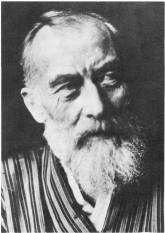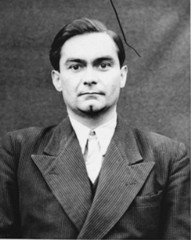Ask A. Brain - An Agony of the Feet
 Question: I often find that my left foot doesn’t know what my right foot is doing. When this happens, I tend to trip and fall, though sometimes I merely split my pants. On rare occasions, my right foot will choose to “just go along with it,” and after a long, meandering walk I find myself lost. I struggle at times to keep my left foot from kicking violently at small dogs. Is there a medical explanation for all of this? If so, what are my treatment options?
Question: I often find that my left foot doesn’t know what my right foot is doing. When this happens, I tend to trip and fall, though sometimes I merely split my pants. On rare occasions, my right foot will choose to “just go along with it,” and after a long, meandering walk I find myself lost. I struggle at times to keep my left foot from kicking violently at small dogs. Is there a medical explanation for all of this? If so, what are my treatment options?
— Claude d’Pied / Oshkosh, Wisconsin
Answer: Yes, there is a medical explanation. There is a good chance you are suffering from Hustenwasser-Krankow disease.
 In 1914, Dr. Josef Hustenwasser described a condition he called fusskopf (“foothead”) palsy. He studied a group of students who were more than twice as likely as their peers to be disciplined for inappropriate kicking of their classmates. He observed that these young males tended to be very poor football players. This ran counter to his intuition. He had expected that better footballers would be more likely to lash out with their feet in social situations, since they would be more effective at it. Additionally, the affected subjects in his study were significantly more likely than a control group to report feelings of disassociation toward one, and only one, foot. One unfortunate man believed—despite clear evidence to the contrary—that his left foot had been separated from his body for several years. Indeed, he claimed to know nothing of its whereabouts aside from the receipt of a couple of postcards from a small town in France. He wore a shoe on his right foot only.
In 1914, Dr. Josef Hustenwasser described a condition he called fusskopf (“foothead”) palsy. He studied a group of students who were more than twice as likely as their peers to be disciplined for inappropriate kicking of their classmates. He observed that these young males tended to be very poor football players. This ran counter to his intuition. He had expected that better footballers would be more likely to lash out with their feet in social situations, since they would be more effective at it. Additionally, the affected subjects in his study were significantly more likely than a control group to report feelings of disassociation toward one, and only one, foot. One unfortunate man believed—despite clear evidence to the contrary—that his left foot had been separated from his body for several years. Indeed, he claimed to know nothing of its whereabouts aside from the receipt of a couple of postcards from a small town in France. He wore a shoe on his right foot only.
After much clinical observation, and a clever study involving a role-playing game he called Treten der Hintern, Dr. Hustenwasser was able to demonstrate that sufferers were unable to control or even anticipate the actions of an affected foot. Little came of his startling discovery aside from a written apology from a Munich Schuldirektor to the family of a student who had been severely punished for a kicking episode (as one newspaper had it, the teenager kicked several teachers; one so hard that it was necessary to employ the services of a veterinarian to retrieve the student’s shoe from the large intestine of the unfortunate pedagogue).
Sadly, Dr. Hustenwasser was unable to publish his study in any Western medical journal. It finally appeared in 1936, posthumously, in an obscure Soviet agricultural journal. Its translation into Russian was a poor one, however, and it inspired an outpouring of letters from collective farmers angry that “moderism and decadent Western ideas” extended even to the medical field. The treatise failed to gain a wide audience.
Jan Krankow, a Polish graduate student studying in Germany, picked up a copy of this Soviet journal in the waiting room of a Berlin dentist in 1939. He was intrigued by the title of Dr. Hustenwasser’s monograph (the Russian translated roughly as “Butt-kicking rude boys: a curious study reveals undergarment cause of their much missing feet and suggests further in-the-brain mechanism for wayward dance stepping of the bourgeoisie”). He was able to obtain a copy of the original paper from the late doctor’s wife, and was inspired to build on Hustenwasser’s research for his doctoral thesis.
 There is widespread belief that Krankow faked his research. He claimed to find more than thirty students suffering from the condition at a conveniently-located school one block from his apartment. This is an extraordinary number given that its total enrollment never exceeded ninety students during the time of his study, and school disciplinary records of the time fail to note any “kicking incidents” at all. Further, his descriptions of an extensive study of these students was disputed by the school’s administration. “He paid well to photograph pretty high school girls at his apartment after classes—he said he was working on a comparative study of ’the bone structure characteristics’ of the post-pubescent Teutonic female—but other than that, and the suspicion that he was filching our newspapers, we never thought much about him,” offered a former director of the school.
There is widespread belief that Krankow faked his research. He claimed to find more than thirty students suffering from the condition at a conveniently-located school one block from his apartment. This is an extraordinary number given that its total enrollment never exceeded ninety students during the time of his study, and school disciplinary records of the time fail to note any “kicking incidents” at all. Further, his descriptions of an extensive study of these students was disputed by the school’s administration. “He paid well to photograph pretty high school girls at his apartment after classes—he said he was working on a comparative study of ’the bone structure characteristics’ of the post-pubescent Teutonic female—but other than that, and the suspicion that he was filching our newspapers, we never thought much about him,” offered a former director of the school.
Nevertheless, his thesis was accepted, and Hustenwasser-Krankow disease (HKD or “fusskopf palsy”) was introduced to the medical world in 1941. Later that year, Dr. Krankow developed and briefly marketed an elixir which he claimed to be an effective treatment for the condition. Soon after, he was killed in a drunken brawl with a Nazi soldier whom he had apparently accused of kicking him in the shin. The formulation of the mysterious “elixir” was lost forever.
Today, doctors treat HKD with a combination of incredulity, sarcasm, and random over-the-counter medications and supplements. Often, doctors advise patients to “get a grip” and/or to “call someone who cares.” But sympathetic chiropractors will often treat the condition with a variety of expensive treatments: spinal manipulations, herbal supplements, and unguents. In California, more than 45,000 patients possess HKD-related prescriptions for medical marijuana.
What do I recommend for you? Wisconsin does not tolerate the medicinal use of marijuana, and a high percentage of its chiropractors are alcoholics, sexual deviants, or both. So, if you are unable to move to California, you might try one or more of these popular folk remedies (well, one is a folk remedy, the others just seem to be good common sense):
- Wear a very, very heavy boot on on your left foot.
- Avoid cheese, bratwurst, leafy green vegetables, and artificial sweeteners.
- Before bedtime, pour one teaspoon of warm urine in your right ear. Take care to lie on your left side.
- Every time your left foot offends you, stomp heavily on it with your right heel while shouting “begone sinister one!”
Good luck, and try to steer clear of small pets.
— A. Brain
 |
Every week, Once a month, Occasionally, Mr Adelbert B. Brain answers one of your questions exclusively for Bachblog. His expertise includes, but is not limited to, questions of science, philosophy, medicine, popular music, unpopular music, spelling, and small-engine repair. He enjoys gardening, oenology, trainspotting, and late-night television. He owns a goat, and lives in a small outbuilding on his parents’ quarter-acre lot in the city of Stillwater, Minnesota. |
| DATE | TITLE |
| 04/12/2018 | Close Captioning? |
| 03/10/2017 | The Pelican Dylan |
| 10/09/2013 | Cometology |
| 01/31/2013 | Shakespeariana |
| 10/31/2012 | The Mayans, Santa Claus and Bacon |
| 04/03/2011 | Potholes and Sinkholes |
| 11/28/2010 | Snoring Crosses the Line |
| 10/14/2010 | An Agony of the Feet |
See also About Adelbert B. Brain
